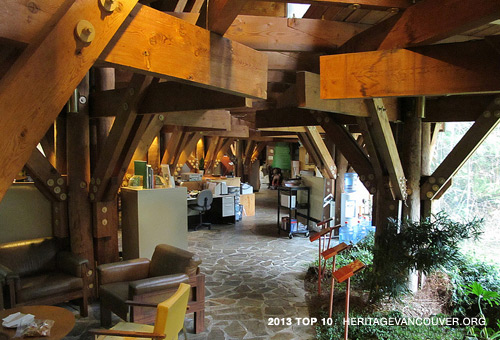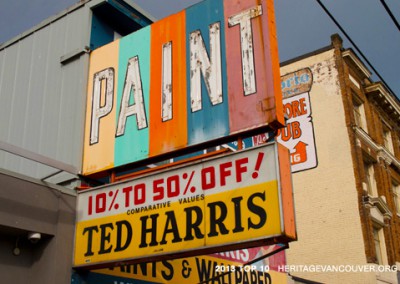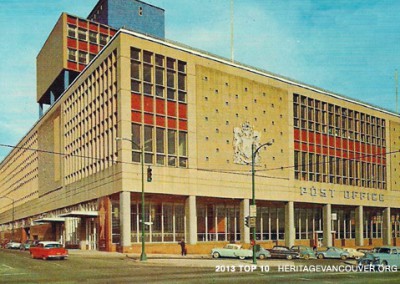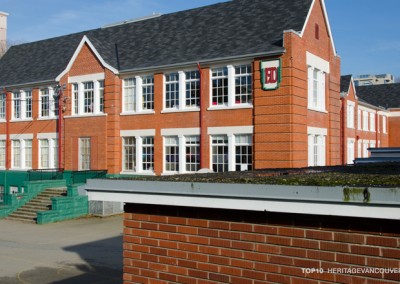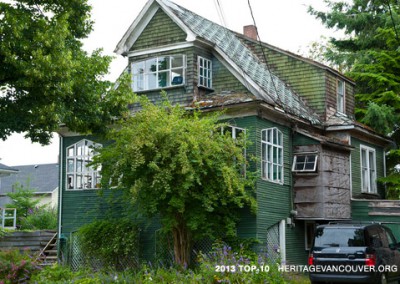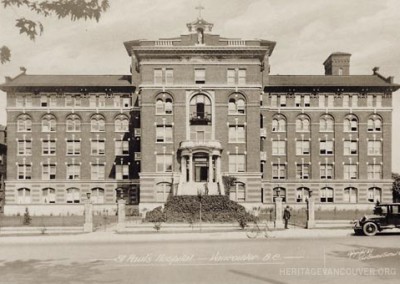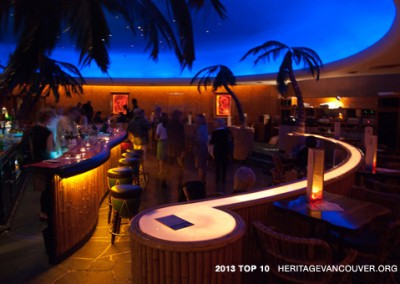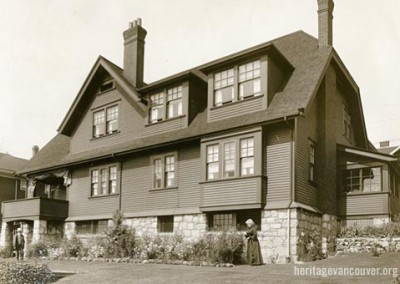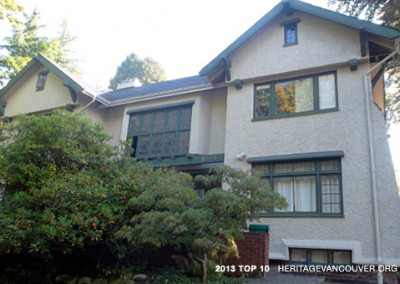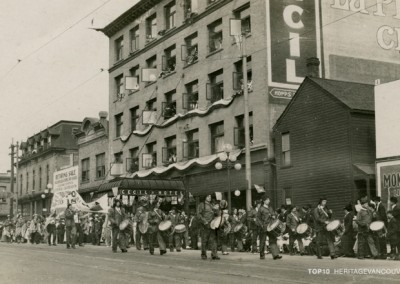The building known as the Forest Education Centre is a modernist masterpiece lost in the forest of an untended section of VanDusen Garden. Built in 1976, it was originally known as MacMillan-Bloedel Place, named for its donor, the largest forestry company in what was then the largest industry in British Columbia.
Its unique educational displays, including a 50-seat theatre, were called “A Walk in the Forest,” and used state of the art technology to excite interest in forest technology. In 1986, MacMillan-Bloedel donated the Centre to the Park Board, which continued to offer educational programs until its new Centre opened in October of 2011. Since then it has been used for storage and offices. Today the Park Board claims it has no use for the Forest Education Centre and has plans to demolish or abandon the building.
Threat
What is the threat to the Forest Education Centre at VanDusen Gardens?
The Education Centre at VanDusen Botanical Garden is in imminent danger of demolition or abandonment. At a meeting on February 26, 2013 with Park Board staff and Heritage Vancouver representatives, Park Board staff outlined the three options they have developed for the Forest Education Centre:
- abandon/demolish
- keep the washrooms only
- keep about 1/4 of the building functioning: washrooms, mechanical and some storage (probably the theatre space), strip out the windows but maintain the roof and (probably) add a railing along the pond edge so that it becomes a viewing platform.
At the time of the meeting Park Board staff were leaning towards the third option. Although this option is the best of the three from the heritage standpoint, it will inevitably lead to the demolition of the building. With windows removed and left exposed to the elements, the Centre will rapidly deteriorate and become a ruin and an eyesore in one of Canada’s pre-eminent and most beautiful botanical gardens.
The Park Board estimates it would take about $800,000 to return the entire building to a functioning state, and about $30,000 per year in operating costs (these costs have not been independently verified). Park Board staff cannot think of any programmatic reason to keep the Forest Centre, arguing that it does not work well for any of the mandated VanDusen functions, and they believe that the training, education and administration functions currently using the Forest Centre can be accommodated in other buildings.
The Park Board staff denied a rumour that they had established a policy in which, an existing building would be removed for every new one built; however, they believe that every Park Board building is an “accessory to green space.” Buildings have to justify themselves programmatically or else be removed. Beginning in March 2013, staff and volunteer activities will move from the Forest Centre to the Floral Hall; thereafter operations staff want to move forward on a resolution to the Forest Education Centre.
Park Board staff say they are open to the idea of partners, whether a public body such as the City of Vancouver or a private organization, as long as the use of the building is complementary to the Park Board’s mandate. To date, they have not made any effort to reach out to organizations that might be interested in occupying the Education Centre. As part of the overall Development Plan for VanDusen Garden, The City of Vancouver awarded a demolition permit to the Park Board for the Centre without requiring either a public hearing on its future or a Statement of Significance to determine its potential heritage.
Significance
Why is the Forest Education Centre significant?
The Education Centre is a “forgotten jewel,” a donation by forestry giant MacMillan-Bloedel to the people of Vancouver through the Park Board. It was designed to explain the role forests play in the province’s environment and economy.
Known originally as MacMillan-Bloedel Place, “A Walk In The Forest,” is a unique, dramatic example of modernist architecture by architect Paul Merrick, working then as chief designer for Thompson Berwick & Pratt. Ron Thom, Merrick’s mentor, was deeply influenced by Frank Lloyd Wright, and MacMillan-Bloedel Place is very much a Wrightian building, with long horizontals anchored by the mass of the theatre at the end, rather like Taliesen West, and integrated with the site.
One of the first “organic” buildings in Vancouver, it was designed to fit specifically into a single site – a major aspect of West Coast Modernism. The relationship of indoors and outdoors is a remarkable aspect of this building. The landscape is brought through the glass into the interior; skylights rendered in leaf patterns on the over-hanging trees; even a simulated stream ran through the building, “anchoring nature.”
Sited on the edge of a reflecting pond and partially buried in a hillside, the building appears to a passerby like an ancient temple in a deep forest. Its interior itself is a forest of magnificent, tree-like cedar columns, interspersed with the trunks of real British Columbia trees, with dioramas of natural environments flowing from one part of the space to another.
You can see the influence of Japanese architecture, expressing the heavy timber aspect of the Buddhist great temple buildings; The Centre is flamboyant in its use of lumber, taking pieces of wood and joining them together in a unique way to create its environment. It is an architecture of abundance, reflecting a time when British Columbians felt that our forests were perpetual.
Architect Paul Merrick set the pavilion into a small hill on the edge of a lake in the northwest part of the gardens. Its green roof was one of the first in the city, and its unique internal columns used some of the finest wood in British Columbia. It won the Festival of Architecture Award of Merit from the Royal Architectural Institute of Canada in March 1980, and the Canadian Architect Yearbook Award in 1974. It was once an object of pride for the city, VanDusen Garden and the Park Board.
Position
Heritage Vancouver’s position
We strongly encourage the City of Vancouver and the Park Board to:
- Put all immediate plans to demolish or partially demolish this building on hold.
- Save and stabilize the building and conduct a feasibility study to determine the scope of work and costs of bringing the building back to its original glory.
- Write a Statement of Significance (SOS) for the building to determine its heritage value. This would be reviewed by the City’s Heritage Commission and approved by City Council. The City requires that private owners follow this procedure if there is any question as to whether a building has heritage value and we would expect the Parks Board to follow this well-accepted procedure for its buildings.
- Seek new partners who will create a use for the building in keeping with its unique design and historic role as a Forest Education Centre. In the words of Rick Jeffery, President and CEO, Coast Forest Products Association one of the panelists at a Heritage Vancouver event held on February 25, 2013, “Please give our industry and the public time to look for solutions to prevent what would be a terrible loss to people in Vancouver and throughout British Columbia.”
- Create a philanthropy policy governing donations from individuals and private-sector organizations. Discarding one generations pride and joy is no way to build a mature city. In the words of Rich Jeffery: “Philanthropy isn’t just for today. It is for today, tomorrow and for years to come.” and “We don’t like to see our gifts neglected and under the threat of being destroyed. Clearly this sets a poor precedent for any potential future donors.”
We strongly encourage the people of Vancouver to:
- Communicate with your city government and let them know that you want a say in what happens to this building being held in trust for you. Here are some suggestions from people we have heard from:
- An Urban Forest/Sustainability Centre for the City of Vancouver
- “The Greenest City” Centre for the City of Vancouver
- A return to its original use
- A Children’s Learning Centre
- Artist in Residence
- Speak with groups that have a mandate similar to VanDusen Garden to create interest in a future new “Learning Centre.”
- Visit VanDusen Garden and go to the north western corner of the site to enjoy the beauty of this building. While you are there take the time to imagine what it was in the past and what it could be in the future. Ask yourself – does this building have a future in my city?
Actions
Updates
Blog by Michael Kluckner – A Walk in the Forest 2013
Photos via Flickr by Jason Vanderhill
Update August 6, 2014: The Park Board was considering total or partial demolition of this ‘gem of a building’. Heritage Vancouver is currently working with Coast Forest Products Association to conserve the Forestry Education Centre. Please see our joint letter for more information.
